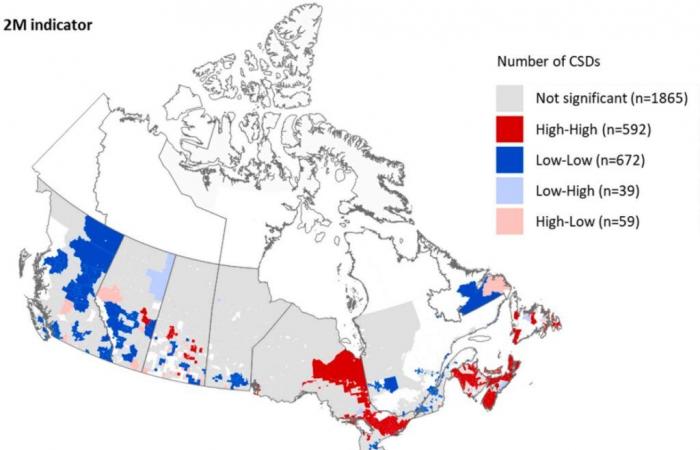Approximately 40% of New Brunswick municipalities have a high proportion of households struggling to pay their electricity bills, according to a recent study. This statistic is poor compared to that of the nine other Canadian provinces.
A rural and isolated location, an older population, lower socio-economic status as well as old and unaffordable housing. These characteristics correspond to many regions in NB.
These are variables linked to municipalities where a high proportion of residents struggle to pay their electricity bills and which are surrounded by communities with the same problem.
However, 40% or 52% of the province’s census subdivisions, depending on the calculation methods, are in this case. In the 10 Canadian provinces, these statistics are 15% and 19% respectively.
This is what the professor in the geography department of McGill University (in Montreal), Mylène Riva, indicates in an article published in August by the journal Energy Policy.
“The clusters of greatest energy poverty are mainly observed in Ontario and the Atlantic provinces,” summarizes the researcher.
She believes this is a consequence of high electricity prices in these places.
Ms. Riva used two criteria to define energy poverty: electricity expenses above 10% of income on the one hand; a portion of electricity expenses in relation to income greater than twice the median portion in the country on the other hand.
In New Brunswick, the places where a large proportion of households suffer from this situation are Madawaska and the Bathurst region, in particular.
High prices
“The results of this study support activist efforts to put energy poverty on the political agenda,” concludes Ms. Riva.
To combat this precariousness, the professor pleads in favor of measures targeting the areas where the greatest needs are found. These initiatives can include help to improve the insulation and heating of buildings, she said.
“In addition to the energy efficiency of housing, political actions should also address energy prices,” argues Ms. Riva. An increase in (these) tariffs will disproportionately and negatively affect those most likely to face fuel poverty.”
The researcher used data from the 2016 census to carry out her study. Since then, NB Power prices have increased numerous times.
The latest example is from April. The Crown corporation was able to increase its prices by 13%. This measure, which can still be reversed, could add $300 per year to the bill of an average household.
“There is a serious problem of energy poverty in New Brunswick,” worries the public speaker in this sector, Alain Chiasson. Raising prices will affect many people in the province and worsen this poverty.”
Political commitments
The NB Energy and Utilities Board decides whether this increase is justified and whether an additional increase of 9.25% may apply in 2025.
“The situation has certainly not improved since 2016,” comments the coordinator of the Common Front for Social Justice, Audrey Gagnon.
She believes that energy poverty is an issue for disadvantaged people trying to live with dignity.
“A few parties seem to be getting involved,” remarks Ms. Gagnon about the provincial election campaign.
Green Party Leader David Coon is promising the creation of a program that would pay $300 per year on average to low-income New Brunswickers to offset rising electricity rates.
Liberal Party Leader Susan Holt announced that her government would eliminate the provincial sales tax (PST) from residential electricity bills upon taking office.
This measure would allow the average New Brunswicker to save approximately $192 per year, according to her.
The NDP promises a $200 rebate on residential electricity bills.







